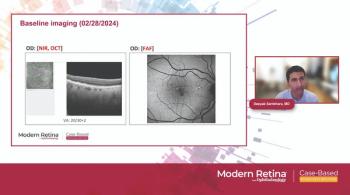
3D printed glasses improve sight in children with amblyopia and strabismus in remote areas
A new study showed that 3D printed customized eyeglasses improved vision in children with amblyopia or strabismus who lived in remote underserved area, according to the inventors of the glasses, who reported their results at the 2024 American Academy of Ophthalmology (AAO) annual meeting in Chicago.
Pediatric ophthalmologist Donny Suh, MD, and James Hermsen initially invented Omni Glasses, 3D printed adjustable eyewear, to help children with ear and facial abnormalities who could not wear standard eyeglasses and then investigated extending their use to children with eye disorders in Ensenada, Mexico.
Considering that refractive errors are a leading cause of visual impairment in children, Dr. Suh and Mr. Hermsen theorized that lightweight, customizable on-the-fly, and made for as little as $1, 3D-printed glasses could potentially help meet the global need for eyeglasses, according to a press release issued by AAO.
Four children with either amblyopia or strabismus in Ensenada were evaluated to receive 3D-printed glasses. University of California, Irvine researchers then both analyzed how well the glasses corrected the refractive errors and questioned the children and parents for their satisfaction with the glasses.
The result showed that the 3D-printed glasses significantly improved the children’s vision. “The spherical equivalent improved from -3.06 ± 2.48 diopters (D) to -0.13 ± 1.69 D and the cylinder from -4.23 ± 1.75 D to -3.85 ± 1.20 D.
On a scale of 1 to 5, with 1 indicating poor and 5 indicating excellent, the children and parents reported an average rating of 4.75.
Researcher Aidin Spina, BS, of the University of California, Irvine, commented, “We hope that our findings highlight these glasses as a highly adaptable and cost-effective solution for addressing a wide range of conditions, including amblyopia, strabismus, and various craniofacial abnormalities in patient populations with limited access to optical and ocular healthcare.”
Newsletter
Keep your retina practice on the forefront—subscribe for expert analysis and emerging trends in retinal disease management.








































